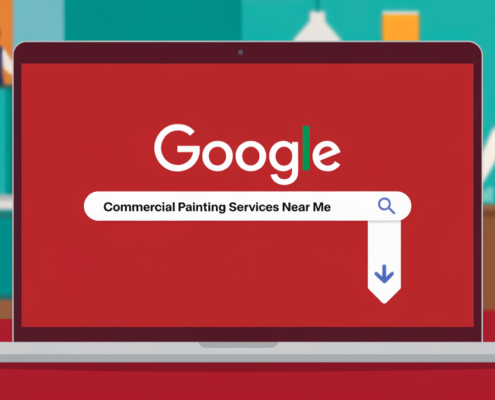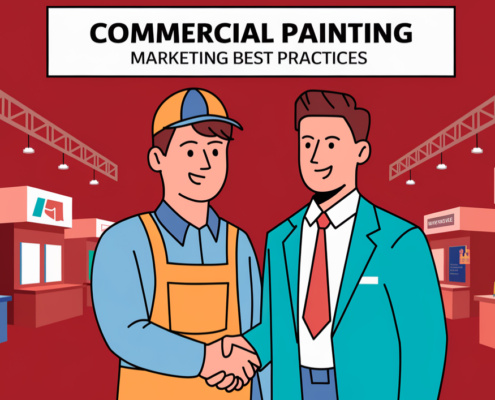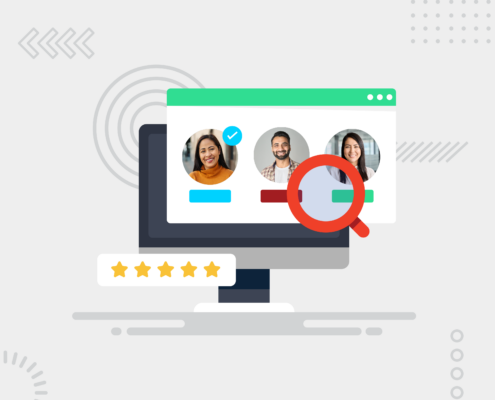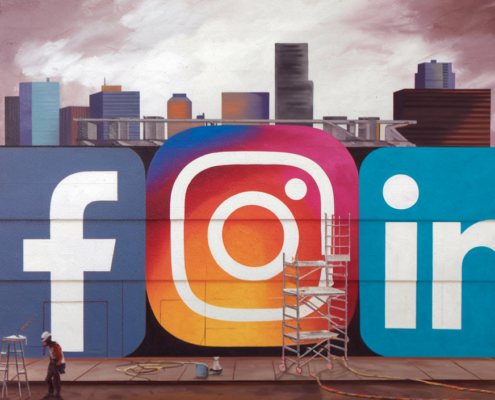
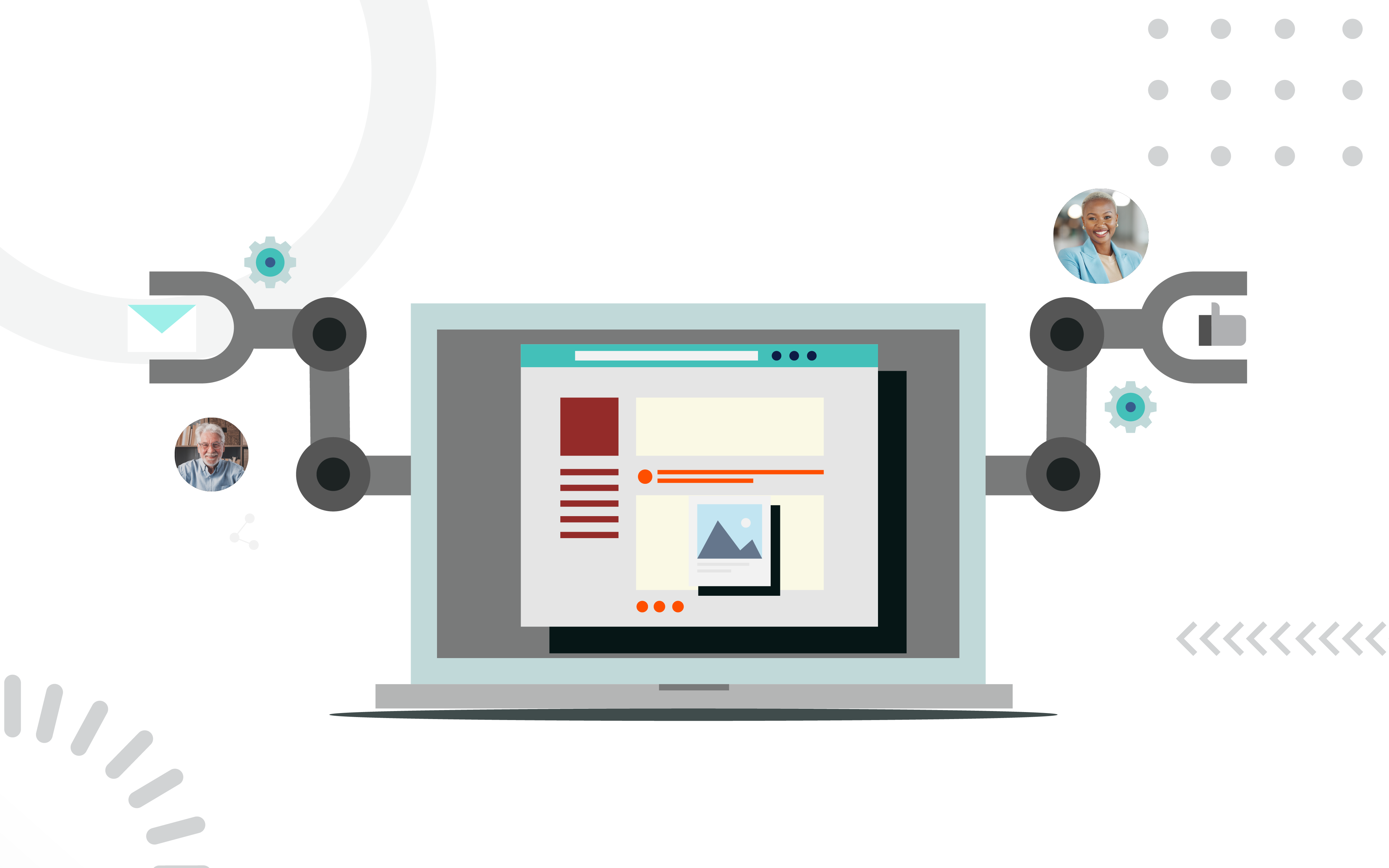
More marketing automation tools are hitting the market, and many marketers fear that they will limit the humanness of their efforts. Personalized marketing is one of the most important aspects of an effective strategy, so of course, it’s going to scare teams that prioritize personalized experiences.
Does Marketing Automation Limit Personalization?
When implemented properly, marketing automation enhances personalization by efficiently managing large datasets, enabling precise audience segmentation, and delivering tailored content based on customer behavior and preferences.
The key is to use automation tools to gather and analyze data, and then apply these insights to create personalized experiences at scale. Effective integration of automation with personalized strategies ensures that each customer receives relevant, customized interactions, balancing efficiency with the need for a personal touch.
For example, if you’re a commercial roofing company and a prospective customer engages with an email about TPO roofing maintenance, the marketing automation tool can be triggered to send the prospect another email that’s specifically tailored to TPO roofing maintenance. This gives you the opportunity to both save time and ensure the right content is sent to the right recipient.
Benefits of Combining Marketing Automation and Personalization
Since marketing automation and personalization are equally crucial for businesses, marketers can combine both and avail more fruitful results.
Some reasons why businesses should maintain a balance between both strategies include:
Effective Use of Time
Automation helps businesses streamline their processes so that they don’t have to spend time manually sending messages and emails to prospects.
Meanwhile, personalization assists them in developing creative and engaging content. This way, they can send automated, personalized emails to prospects and customers based on their stage in the buyer’s journey. Automation can also be used to send emails based on event triggers, like contract renewal or expiration dates.
As a marketer, you can create exciting content by thinking about it, putting it in the machine, and then being ready to go!
Advanced Lead Generation Efforts
The most common form of marketing automation is email marketing automation. While automation allows you to focus on planning the email message rather than wasting time sending it, it also makes it easy to convince more prospects to convert.
Automation platforms allow you to see how prospects are engaging with your content, allowing you to continually optimize your campaigns. Most automation platforms also allow you to include links, forms, and even meeting calendars, making them a great source for lead generation.
Increased Brand Recognition
When businesses make people feel valued, they become memorable. Satisfied customers are likely to spread the word within their circles, boosting brand recognition and giving you a competitive edge. This positive word-of-mouth can enhance your market presence, distinguishing your brand from competitors and fostering long-term loyalty among your customer base.
Supports Long-Term Relationships
Customers trust brands that show genuine care. By sending well-designed, personalized email messages, you provide prospects with a tailored experience that resonates with them. This thoughtful touch fosters a deeper connection, encouraging loyalty and long-term commitment to your brand. Personalization in communication makes customers feel valued, enhancing their overall satisfaction and engagement.
Abstrakt’s outsourced sales and marketing experts use automation to save time and provide prospects with more personalized experiences. Explore the impact our B2B appointment setting services have on business growth here.
How To Integrate Marketing Automation With Personalization
So, what is the right balance between marketing automation and personalization? Here are six steps to help you determine the perfect combination between both and implement it easily:
Step 1: Determine Your Ideal Level of Personalization
If your emails aren’t stopping your prospects from scrolling, are you even doing it right?
Generally, people feel more connected to brands, celebrities, and things that make them feel closer and heard. This is why most businesses and social media influencers try to be more personal with their target audience.
The key to executing the best personalization strategy is keeping it audience-centric instead of focusing on increasing sales or marketing a product. Thus, the first step to balance marketing automation and personalization is defining how much you have to personalize with your target audience. Remember that your levels of personalization vary from one business type to another.
For instance, suppose you’re a software provider and a prospect has specifically stated that they’re interested in learning about a software feature that streamlines operations. Sending information about how your software enhances productivity probably won’t resonate with the buyer because that’s not a pain point for them. Therefore, you must tailor content that focuses on their needs or else they’ll feel like you don’t understand their obstacles.
Step 2: Segment Your Target Audience
It’s nearly impossible for businesses to develop an automated personalized email for a larger audience having different interests and lifestyles.
In such a situation, businesses need to segment their audience into different categories based on their demographics. Businesses can segment their audience based on buyer personas, job titles, industries, geography, or even where they are in the buyer’s journey.
Once you successfully execute the segmentation, you can design specific marketing campaigns for each. This makes your marketing automation platform and personalization strategy more achievable. Additionally, this allows you to analyze which marketing efforts worked best with each segment, allowing you to repeat your approach or adjust as needed for better results.
Keep Reading: Guide to Lead Segmentation
Step 3: Automate the Campaign and Personalize Your Message
The third step in balancing marketing automation and personalization is to personalize the message as the audience will view it. Meanwhile, you need to automate the method to make the message more meaningful and faster.
For example, let’s say your business plans to run display ads to showcase your new clothing collection.
First, create eye-catching ads for your ideal customer. Then, use automation to target your ideal demographic. For even more personalization (and conversions), retarget the ad to past or current customers and people who have visited your website.
Lastly, allow the platform to automate your campaigns, serving the proper ad content to the ideal user. This could include an eye-catching display ad that shows the specific piece of clothing the potential buyer was looking at. Then, allow your platform to automate campaigns based on the user’s interaction with the ad. Did they click on it? How long did they spend on your website after? Did they buy the piece of clothing they were looking at?
You can then utilize the campaigns’ feedback to adjust your level of personalization and automation, as well as the triggers that control which ad is served to which user.
Step 4: Optimize the Campaign Frequency
There is no doubt that automation makes your processes easier and effortless. However, businesses need to realize that they can’t use email marketing automation all the time. You can either be helpful or annoying.
People don’t like to receive email notifications from a certain brand at every hour of the day. Sending such emails is popular as “spamming the inbox,” and many networking sites and business platforms mark them “irrelevant.”
Of course, as a marketer, you don’t want your email to get ignored in the spam folder. In fact, if your emails are continuously marked as “spam,” your domain or account can be blacklisted. This could be a huge hit to your previous and futuristic marketing campaign efforts.
Therefore, you need to be more cautious while planning your marketing campaigns. Optimize the frequency of your marketing campaigns and set a limit for the number of emails you send to each prospect so you don’t drive them away. As a starting point, you can use the frequency of your automated and personalized marketing campaigns similar to what you set for personalized ones.
Step 5: Gather More Data Through Automation for Increased Personalization
A marketing automation platform provides you with a range of tools that perform several tasks. Some help you streamline your processes, while others give you deeper insights into your campaigns.
Businesses can use the latter to analyze their campaigns and see how different metrics are performing. They can also identify their flaws to avoid repeating them in the future. As a result, they get the right balance between marketing automation and personalization.
Additionally, they can also use this automated data to create more personalized content according to the consumer’s interests. For example, if a consumer has browsed through your shoe category frequently, you can customize a compelling email that persuades them to revisit your website and buy a pair.
Key Takeaways
Automation and personalization are like cement and bricks—both build a solid foundation for your future marketing campaigns. Evaluating the perfect balance between automation and personalization surely helps marketing teams achieve their goals more effectively
While automation speeds up the massaging process, personalization makes emails more interesting and compelling. The steps above may have made balancing marketing automation, and personalization sound like a piece of cake. However, in reality, it isn’t as easy as it seems. Executing the right balance between both can be a pretty daunting and frustrating task for most businesses.
Abstrakt Marketing Group’s outsourced B2B lead generation experts use automation tools to send quality yet personalized content to prospects in our clients’ sales pipelines. With our extensive list of sales tools and tech and the sales skills to effectively engage potential buyers, your business has to opportunity to engage more qualified prospects, leading to high-converting sales opportunities.
When you’re ready to maximize the impact of your business growth efforts, contact the lead generation specialists at Abstrakt!
